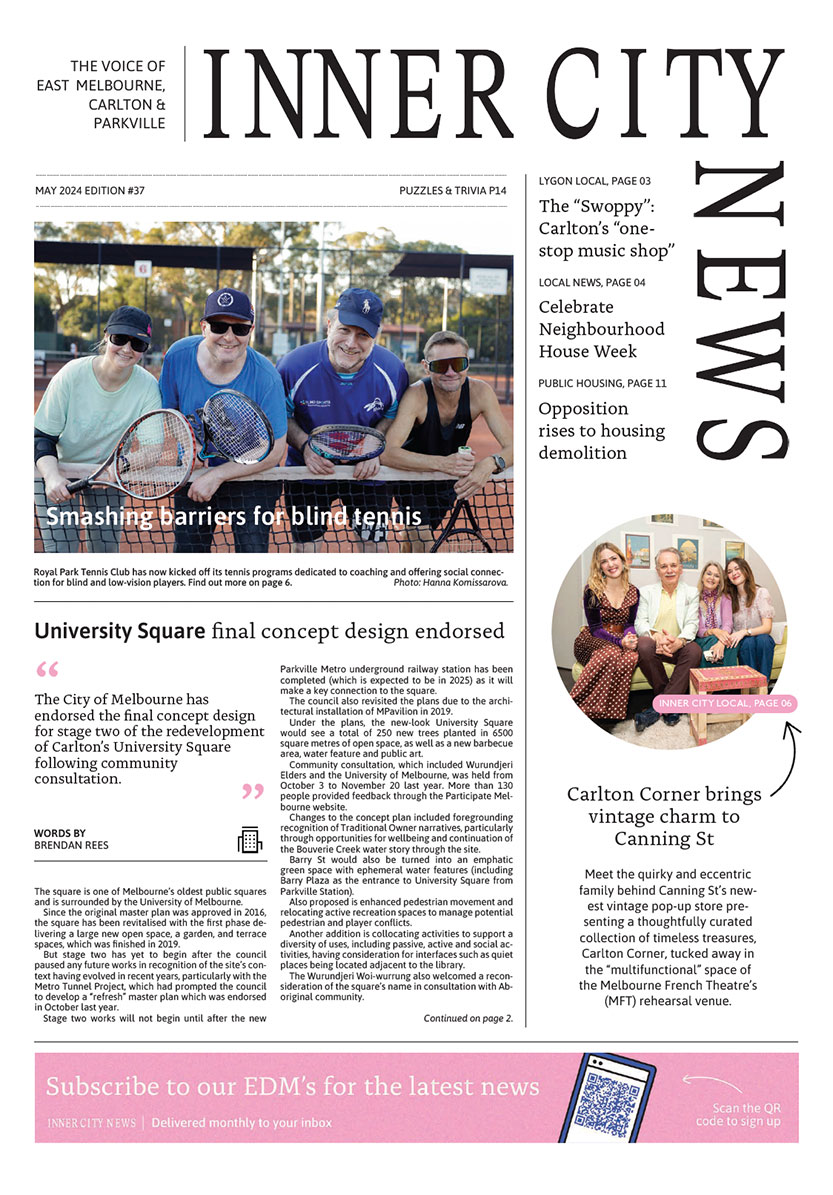Changing times of Princes Hill School Park Centre captured in new book
Martin Brennan vividly remembers the excitement that enveloped the former Princes Hill School Park Centre (PHSPC) during the ‘80s when it opened its doors as a community hub.
The Carlton resident was the centre’s then community education officer, just a few years after the school was built in 1975 as a cooperative arrangement between the Princes Hill High School, the Princes Hill Primary School, and the City of Melbourne.
The PHSPC is now home to the Princes Hill Community Centre where the original two-storey red brick building still stands at Bagung Lane.
Today, Mr Brennan has reflected on the centre’s transformative period more four decades ago when it adopted a community empowerment model, which has been published as part of his contribution in a newly launched book produced by the University of Melbourne titled Schools as Community Hubs – Building ‘More than a School’ for Community Benefit.
In adopting the model, Mr Brennan, who is the vice president of the Carlton Residents’ Association, said it was able to “radically engage the school, community and the local government in a range of activities that promoted and facilitated participatory decision-making”.
This included the PHSPC fostering and furthering a range of programs and projects including the production of the City Alternative News, a community newspaper circulated throughout Carlton “by the people for the people”.
Other highlights were securing the North Carlton Railway Station for community use, which was established as a neighbourhood house, and the development of the Curtains for Carlton, an artist in schools initiative.
In the book is Mr Brennan’s chapter titled Rear Vision: Lesson from Community Education in the ‘80s, which explores the history of the community education movement inspired by concepts used in the US, which he explained, “provides evidence that broadening the role of schools beyond the use of their facilities can build connections, resilience and empower communities”.
Mr Brennan said he was interested in writing the piece when he was an Honorary Senior Fellow at the University of Melbourne’s Melbourne Sustainable Society Institute.
“I became aware of the LEARN (Learning Environments Applied Research Network) interest in exploring the concept of schools as community hubs (or more than a school) and thought I know something about that!”
“Through examples of partnerships and collaborations both past and present the book expands the opportunities that ‘more than a school’ can offer schools for the future.”
To download a free copy of the book:

Carlton Corner brings vintage charm to Canning St





 Download the Latest Edition
Download the Latest Edition